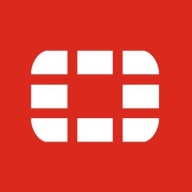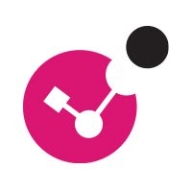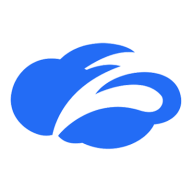


Check Point Quantum Force and Zscaler Cloud Firewall compete in the advanced firewall and network security category. Zscaler Cloud Firewall seems to have the upper hand with its comprehensive cloud-based solution offering flexibility and ease of use, which is highly appealing in today’s digital environment.
Features: Check Point Quantum Force offers robust VPN capabilities essential for user connections to enterprise environments. It supports strong IPsec VPN features and application filtering, ideal for educational institutions. It also supports centralized management and zero-day threat protection. Zscaler Cloud Firewall focuses on broad protection across multiple devices, integrating CASB and DLP for full security coverage with easy cloud-based deployment.
Room for Improvement: Check Point Quantum Force suffers from frequent stability issues and compatibility problems with hardware, affecting its reliability. Zscaler Cloud Firewall could improve its blocking mechanisms and data center coverage while enhancing its reporting for user understanding and expanding its data center footprint in remote areas.
Ease of Deployment and Customer Service: Check Point Quantum Force offers versatile deployment options, including on-premises and hybrid environments. However, its customer service receives mixed reviews for effectiveness. Zscaler Cloud Firewall provides straightforward cloud-focused deployment, minimizing hardware integration issues, though users have indicated a need for better client-centric support and wider data center distribution.
Pricing and ROI: Check Point Quantum Force is considered pricey but justifies costs with comprehensive security features, albeit with a confusing licensing model. It offers good ROI in security management but lacks clarity in costs. Zscaler provides differentiated pricing models suitable for different needs, though it may be costly for smaller businesses. The cloud-native capabilities offer efficiency and flexibility, yielding a favorable ROI primarily for configurations with over 1000 users.
Clients are now comfortable and not wasting productive hours on IT support.
The automation part is giving us a cost benefit and speed; we can react faster.
It's a very useful tool to mitigate and protect your enterprise.
This is a time-saving measure because we don't need to deploy a cluster or a firewall each time; we just create a virtual system on the management server using the same appliance.
Incident response time has reduced significantly, and downtime due to network issues has been minimized, leading to an improved return on investment.
The fact that we've not had any breach toward the data center side is plenty enough.
They offer very accurate solutions.
The quick resolution of issues with Fortinet FortiGate is due to the support of the company and the fact that the equipment is easy to work with.
I would rate the technical support for Fortinet FortiGate a ten out of ten.
The support team we engaged was knowledgeable and well-versed with the application.
We have escalated issues to Check Point technical support multiple times and have received timely and very good responses.
Even challenging issues like those with VPNs have been resolved efficiently with their help.
The response and support are sometimes inadequate, which detracts from the overall experience of an otherwise impressive solution.
The technical support from Zscaler was excellent.
They scale up really well from smaller models like the FortiGate 40 and 50 to bigger sites with the FortiGate 100 for more throughput - up to enterprise datacenters.
The variation comes in terms of the interfaces and throughputs, but from a security perspective, you get the same benefit, irrespective of whether you have an entry-level unit or an enterprise.
We determine sizing based on multiple factors: number of users, available links, traffic types, server count, services in use, and whether services will be published.
If specified correctly, even the smaller boxes offer high session and bandwidth rates, making the solution highly scalable, even up to telco-level requirements.
It is easy to scale up by adding capacity through clustering or upgrading the license, and it effectively handles spikes in remote user connections or increased east-west traffic without noticeable bottlenecks.
Scalability must be carefully planned for, considering future growth and user base increases.
In this case, Twingate will be very easy compared to Zscaler.
We're experiencing 99.999% availability consistently.
I would rate the stability of Fortinet FortiGate a ten out of ten.
Currently, we are experiencing a general outage of one of the main internet service providers of the Dominican Republic, and we have not been impacted in our operations because with SD-WAN, we have another internet service provider and we are working with the second WAN connection without any disruption.
While the solution is generally stable, there are complications, such as requiring SmartConsole for deployment and upgrades, which can be time-consuming.
I have worked with Check Point products for 15 years and haven't found any stability or performance issues.
The use of Check Point firewalls has helped improve our security posture without any downtime.
There were some stability issues due to occasional latency and lags, particularly with the GUI and report generation.
Investing in a solution that can accommodate such growth would be more cost-effective than repeatedly purchasing new hardware.
While Fortinet claims to offer a comprehensive network solution, it falls short in addressing computer application issues, particularly server security.
When considering Sophos XG, which we also use, the logging and reporting functionality is notably more efficient.
Other products, like FortiGate, are perceived as more intuitive because they are easier to configure from the start.
More granularity and control for threat prevention, especially on the OT side, would be beneficial.
It would be beneficial for Check Point NGFW to integrate more advanced AI and machine learning algorithms for better threat detection and response.
For now, there is no dashboard or network management system available for Twingate.
The reverse proxy feature for Data Loss Prevention (DLP) is missing.
I believe the integration of AI could improve the dashboard by making it more agile and effective in monitoring and predicting threats.
Last year, I renewed the support for three years, which can sometimes be expensive but depends on the security benefits and how it helps us.
It offers cost savings as it is generally cheaper than the competition.
It is about 20% cheaper.
In comparison to Fortinet and other products, the pricing may be considered high.
Compared to other solutions, the pricing of Check Point NGFW is high.
The perception is that Check Point NGFW is expensive, especially when all software modules are included.
Zscaler Cloud Firewall is quite expensive compared to competitors.
In terms of security, we have not experienced any security flaws or loopholes, and it has proven to be quite stable.
FortiGate has helped reduce the risk of cyberattacks that might disrupt our client's production.
These features help reduce our downtime, manage the ISPs, and deploy SLAs for all the website traffic.
The firewall's default behavior of blocking all traffic, including a cleanup rule that blocks everything from external to internal sources, is highly valuable for protecting our network.
The most valuable features in my experience include perimeter firewalling, cloud and mobile security, application control, URL filtering, DLP, threat prevention, intrusion protection, and safeguarding against malware, botnets, and zero-day attacks.
Since implementing it, we have noticed a lot less getting through that maybe other antivirus within firewalls had failed to catch.
It is really customized, a security policy that can be applied to the users so they can access only the resources I enable them.
Advanced threat protection features in Zscaler Cloud Firewall are practically the key component that every customer wants.
The biggest advantage of Zscaler Cloud Firewall is its consolidation of products.
| Product | Market Share (%) |
|---|---|
| Fortinet FortiGate | 20.7% |
| Check Point Quantum Force (NGFW) | 2.8% |
| Zscaler Cloud Firewall | 0.4% |
| Other | 76.1% |



| Company Size | Count |
|---|---|
| Small Business | 350 |
| Midsize Enterprise | 129 |
| Large Enterprise | 187 |
| Company Size | Count |
|---|---|
| Small Business | 131 |
| Midsize Enterprise | 98 |
| Large Enterprise | 195 |
| Company Size | Count |
|---|---|
| Small Business | 4 |
| Midsize Enterprise | 2 |
| Large Enterprise | 13 |
Fortinet FortiGate excels in providing integrated VPN, firewalling, and Unified Threat Management (UTM) with centralized management and high availability. It supports remote access and comprehensive threat protection, making it a preferred choice for securing networks.
Fortinet FortiGate offers a robust security platform with features such as strong intrusion prevention, application control, and web filtering. Its integration with Active Directory and SD-WAN functionality provides scalable solutions for large networks. Users appreciate its ease of use through centralized management interfaces, ensuring robust security with flexible configurations. However, FortiGate could enhance its graphical interface and technical support responsiveness, address firmware bugs and costly licensing, improve logging, integrate better with third-party tools, and strengthen scalability and memory for log storage. Complexity in configuration and the need for intuitive features are noted challenges, and there's a demand for advanced security, zero-trust capabilities, and AI integration.
What are the key features of Fortinet FortiGate?Fortinet FortiGate is widely implemented across industries like education, finance, and government. Companies use it for firewall protection, VPN, and SD-WAN capabilities, ensuring secure perimeter and data center security. It facilitates remote access management and traffic routing optimization, offering reliable security and connectivity solutions.
Check Point Quantum Force NGFW provides centralized management with scalable security for network perimeters. As a reliable firewall, it ensures advanced threat prevention and offers seamless integration, making it suitable for various network environments.
Offering comprehensive security, Check Point Quantum Force NGFW helps control ingress and egress traffic, secures data center firewalls, and integrates seamlessly with cloud and on-premises setups. Users appreciate its application control, deep packet inspection, and identity awareness features for enhanced protection against cyber threats. Despite pricing issues and interface complexity, its IPsec VPN and robust logging provide valuable insights into network activities.
What are the key features of Check Point Quantum Force NGFW?Check Point Quantum Force NGFW is deployed across industries for securing network boundaries, supporting critical data center operations, and enabling secure VPN connections. In finance, it helps meet stringent compliance standards, while in healthcare, it's crucial for protecting sensitive patient data through robust security protocols.
Zscaler enables the world’s leading organizations to securely transform their networks and applications for a mobile and cloud first world. Its flagship services, Zscaler Internet Access and Zscaler Private Access, create fast, secure connections between users and applications, regardless of device, location, or network. Zscaler services are 100% cloud-delivered and offer the simplicity, enhanced security, and improved user experience that traditional appliances or hybrid solutions are unable to match. Used in more than 185 countries, Zscaler operates the world’s largest cloud security platform, protecting thousands of enterprises and government agencies from cyberattacks and data loss.
Check more details: https://www.zscaler.com/produc...
We monitor all Firewalls reviews to prevent fraudulent reviews and keep review quality high. We do not post reviews by company employees or direct competitors. We validate each review for authenticity via cross-reference with LinkedIn, and personal follow-up with the reviewer when necessary.